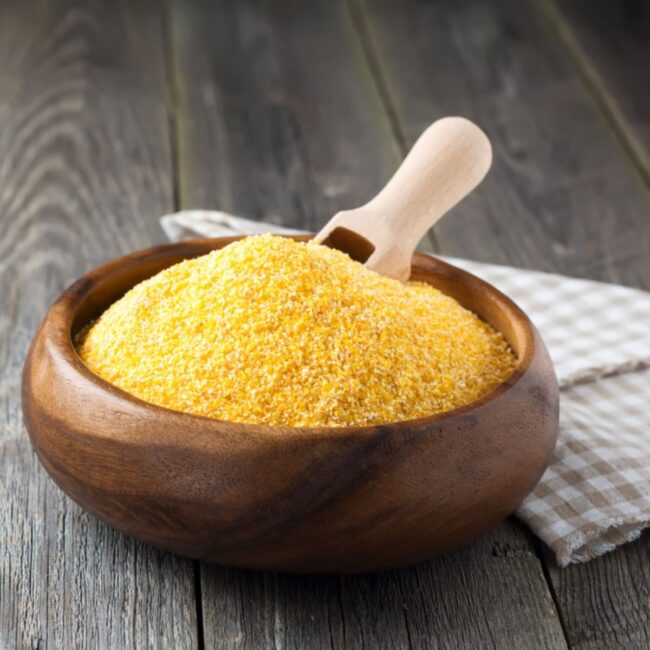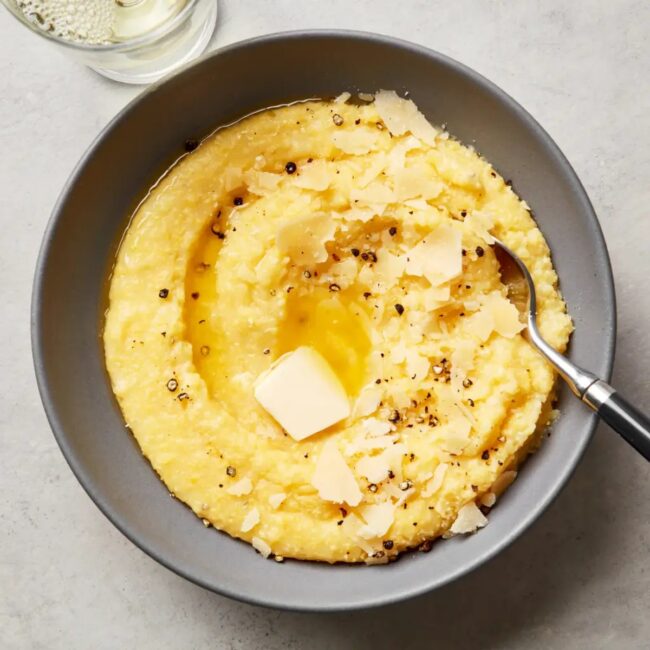3 Cornmeal Substitutes for Breading and Baking Needs
Our best cornmeal substitutes offer a range of textures, from fine and powdery to coarse and gritty. Some alternatives provide a mild sweetness, while others bring a heartier, more rustic feel.
The best choice depends on whether a dish needs a thickening agent, a crispy coating, or a baking ingredient. A few options work well for breading, while others add depth to cornbread and muffins.
Certain substitutes bring a slightly different flavor while maintaining the right consistency. Check out these 3 excellent alternatives to cornmeal for all your cooking needs:
What Is Cornmeal?
Cornmeal, derived from finely ground yellow corn, presents a versatile ingredient with various textures ranging from fine to coarse. The predominant type used is dent corn, known for its high starch content and distinct corny flavor.
This staple often shines in the kitchen through its role in creating cornbread and adding a delightful crispiness when coating fish or chicken dishes. Different grinding methods contribute to the texture variations; stone grinding yields coarser meal while steel rollers produce finer grounds.
How Is Cornmeal Different from Cornstarch?
Before choosing a cornmeal substitute, it's important to understand how it differs from cornstarch. While both come from corn, they serve very different purposes in cooking.
Key Differences:
Understanding their roles ensures you choose the right ingredient for your dish and get the best results!
Easy Cornmeal Substitutes for Recipes
If you're out of cornmeal, these ingredients provide a similar texture and mild sweetness.
Corn Grits
Corn grits serve as an excellent alternative to cornmeal, bringing a unique texture and flavor profile. These finely ground bits of corn are slightly coarser than traditional cornmeal, which means adjusting the quantity in recipes is essential for achieving the desired consistency.
When cooking or baking with liquid-based recipes, using less grit will ensure your dish maintains its intended moisture without becoming overly thick. If you seek a more similar texture to that of cornmeal, grinding the grits further can help replicate it seamlessly.
Despite their subtle differences in size, they provide comparable taste and performance in various dishes like cornbread or batters while still maintaining integrity throughout cooking processes. For best results when preparing batters, remember to reduce the amount compared to what you'd typically use.
Polenta
Polenta serves as an excellent alternative to cornmeal, bringing its own unique texture and flavor profile. This coarsely ground corn product is available in various grades, allowing you to select the right consistency for your recipe needs.
If a dish calls for coarse cornmeal, opting for coarse polenta can maintain that desired texture while enhancing taste. In some regions, you'll find that people use the term polenta interchangeably with cornmeal; this highlights their close relationship in culinary applications.
While using polenta as a substitute usually maintains similar ratios to cornmeal, slightly reducing the amount of coarse variety can yield optimal results in your dishes.
Other Potential Substitutes
Cornmeal substitutes include various alternatives that cater to both texture and flavor preferences. When aiming for a similar consistency, options like semolina, ground oats, or breadcrumbs can be effective replacements in your recipes.
For those who wish to replicate the distinctive taste of cornmeal, exploring other corn products may yield satisfying results. Additionally, incorporating semolina flour or cake flour into baked goods offers another dimension while maintaining the overall integrity of your dish.
Baking powder serves as an option too but is best used sparingly across specific recipes where appropriate adjustments are made for optimal outcomes.
What to Know Before Substituting Cornmeal
Understanding the role of cornmeal in recipes is crucial before making substitutions. This ingredient serves primarily two key purposes: enhancing flavor and altering texture.



